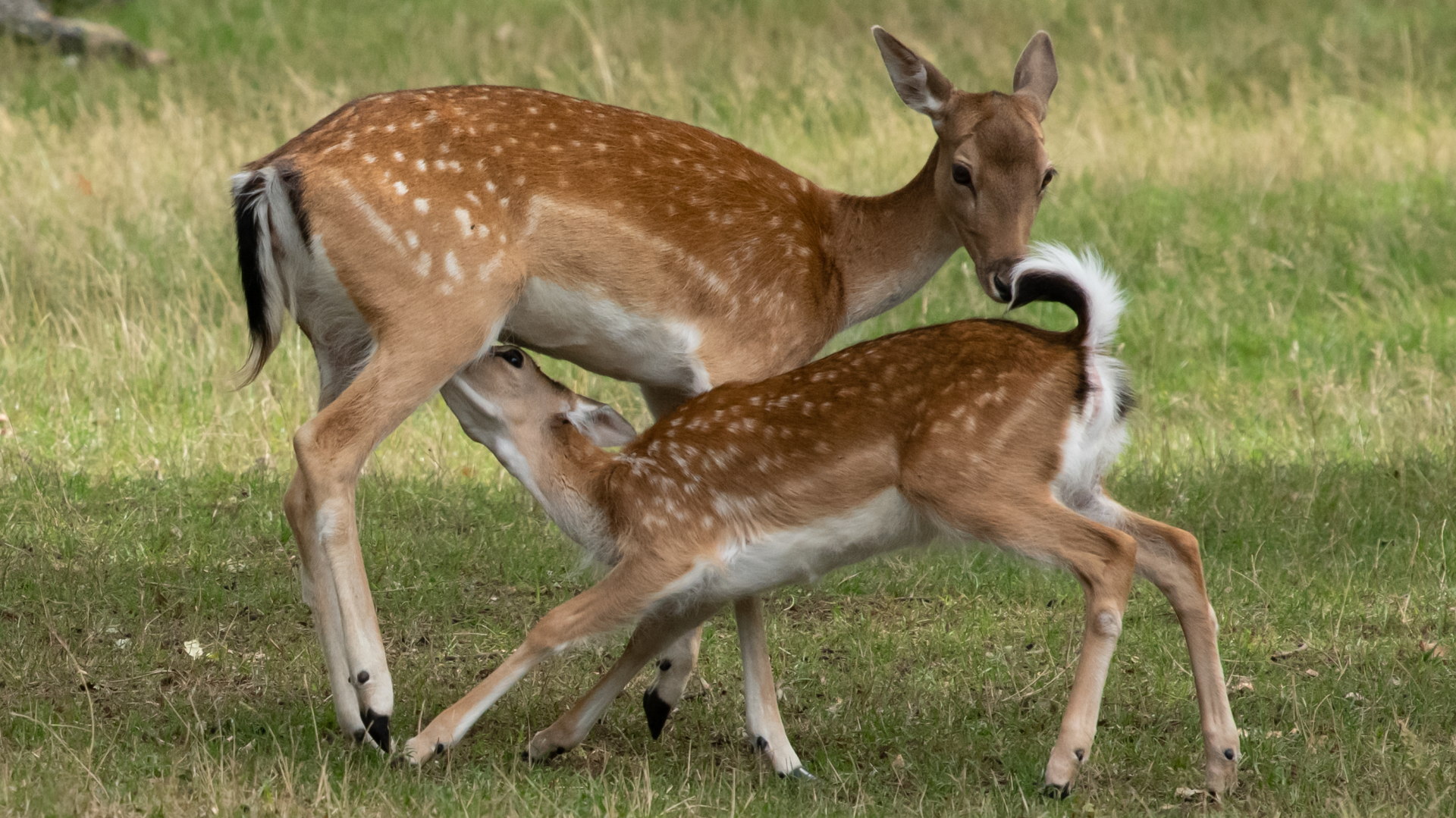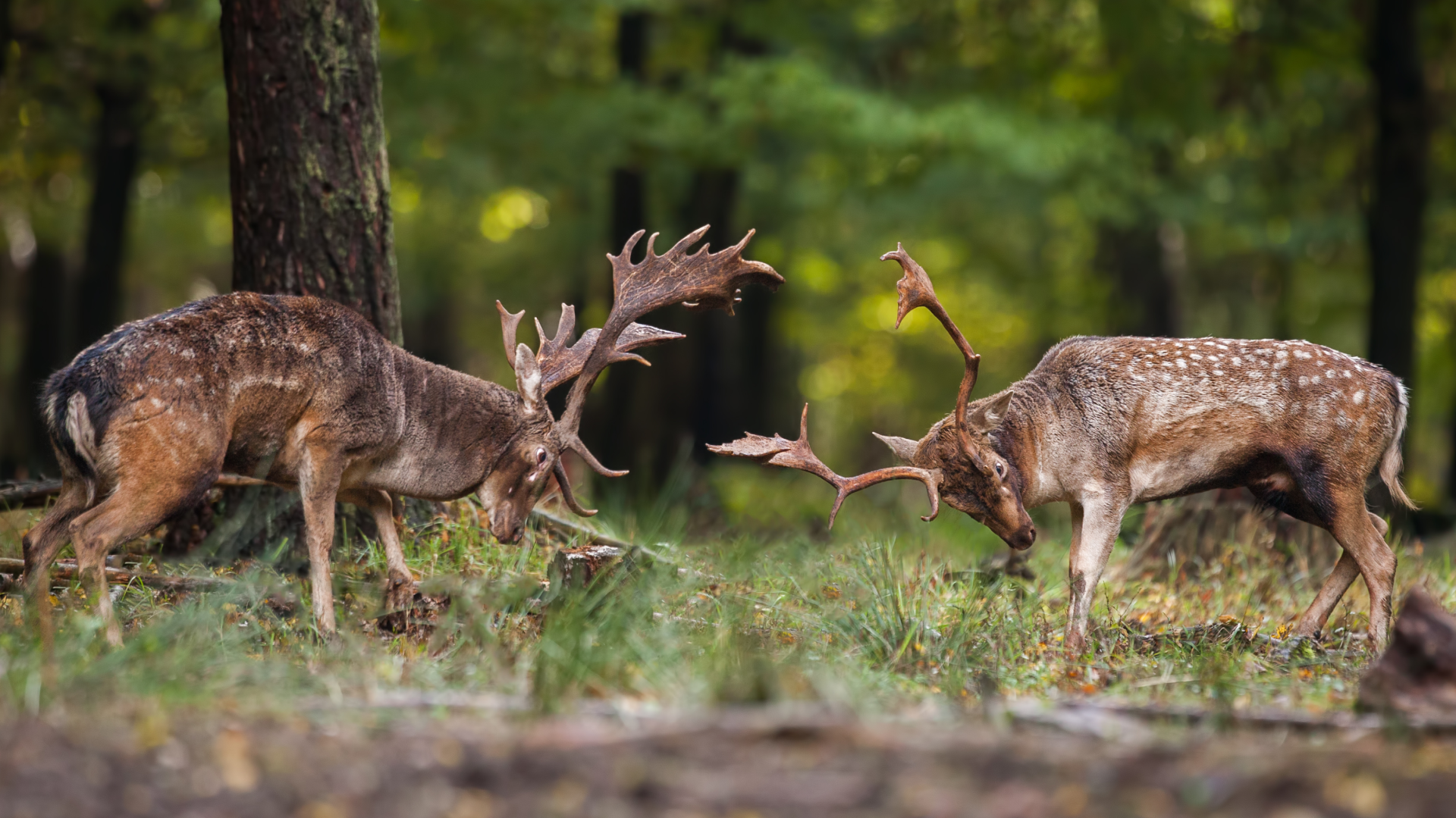With its mottled coat and elegant pose, the fallow deer (Dama Dama) is a ruminant mammal similar to the deer. It is highly adaptable and can survive in a wide range of habitats and is seldom found in the wild. Learn more about this mammal and its role in the Portuguese biodiversity.
The fallow deer (Dama Dama) is a widely known and appreciated deer species in Portugal. This animal from the Mediterranean region (Turkey), stands out for its beauty and presence in Portuguese landscapes and can be found often in natural parks and game reserves.
This species stands out for its unique coat and antlers. The coat changes colour according to the season, displaying a reddish-brown colour with white spots on the back and flanks during the summer, becoming darker, uniform and grey in winter. This seasonal change of looks allows the fallow deer to better adapt to the environment providing it camouflage against predators.
The fallow deer is a medium-sized animal, 85 and 110 cm tall and weighing 40 to 100 kg. Sexual dimorphism is evident in this species and females are generally smaller and males with more robust and ornate features. Males are easily identifiable by their impressive flat antlers, which renew annually in the Spring and reach their growth peak in the summer. In adult males, antlers can reach 70 centimetres in height and 20 centimetres in width.
As regards its habitat, the fallow deer is quite adaptable. It inhabits forests, shrublands and open areas, preferring areas with plenty of grazing and water. In Portugal, it is fairly common in regions such as the Gaia Biological Park, Tapada Nacional de Mafra (Lisbon region), Herdade do Vale Feitoso (Beira Interior) and in some estates in the Alentejo and Ribatejo, offering the right environment for its conservation and observation.
They are not territorial animals and their areas of activity overlap. When undisturbed and with an abundance of food their daily commutes are typically short. The fallow deer diet is herbivorous, feeding on assorted vegetation, including leaves, herbs, fruits, and tree bark.
It is also worth mentioning the social behaviour of deer. For much of the year, males and females live in separate groups, getting together only during the mating season, which occurs in the fall. Males then compete through fights and displays of strength to win over females. Gestation lasts about eight months, culminating in the birth of one, exceptionally two, offspring in spring (late May).





